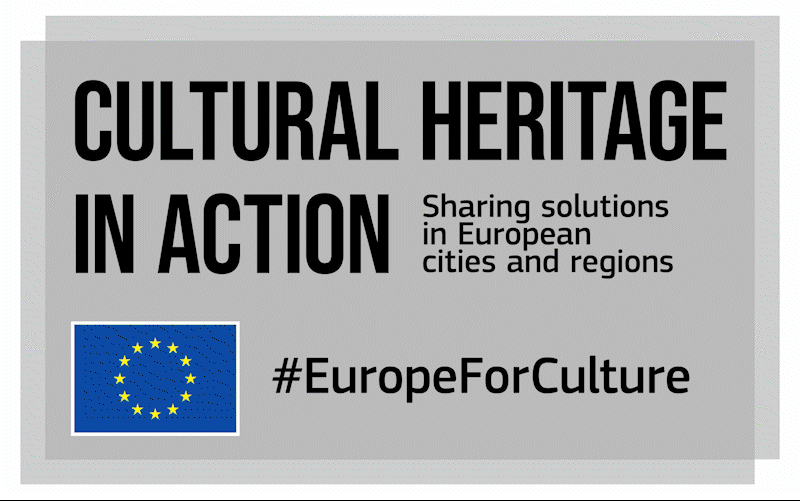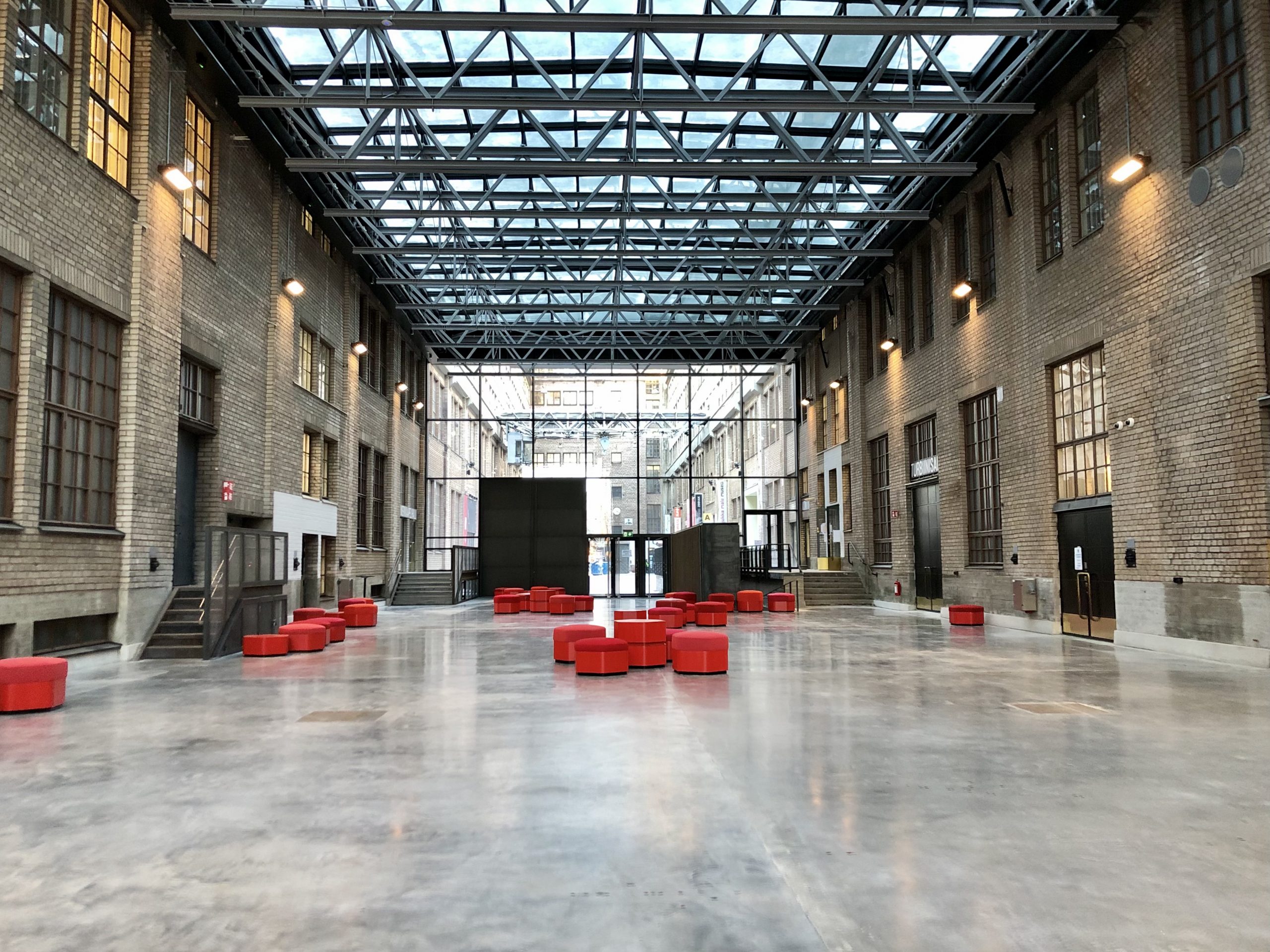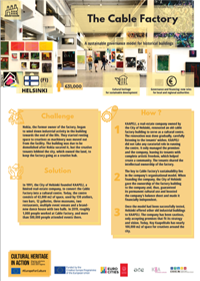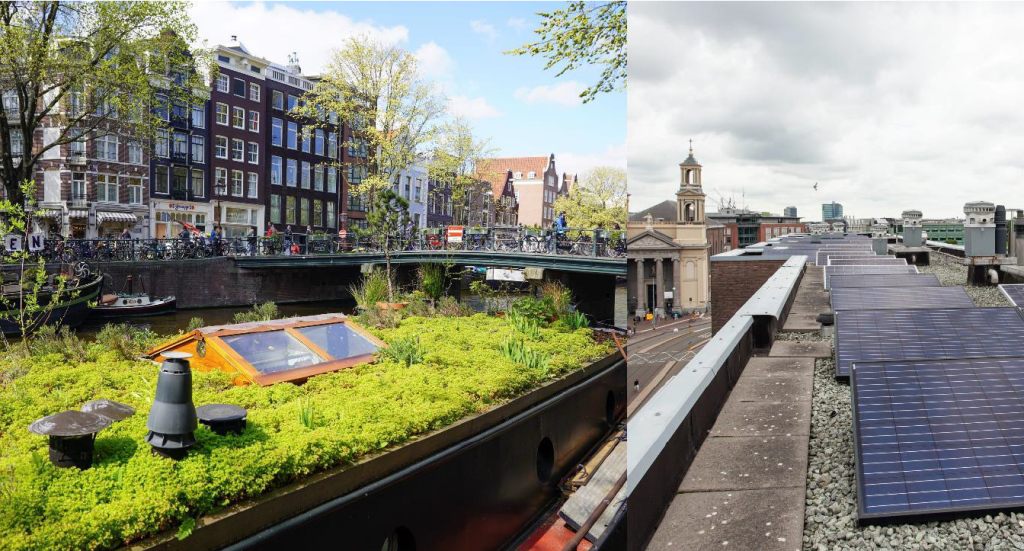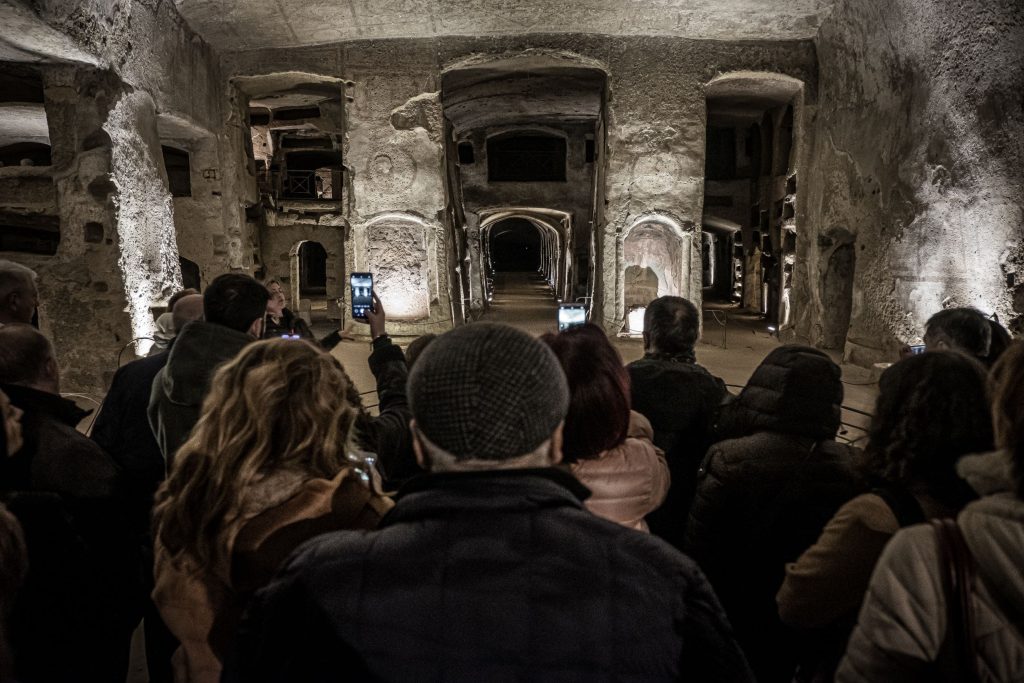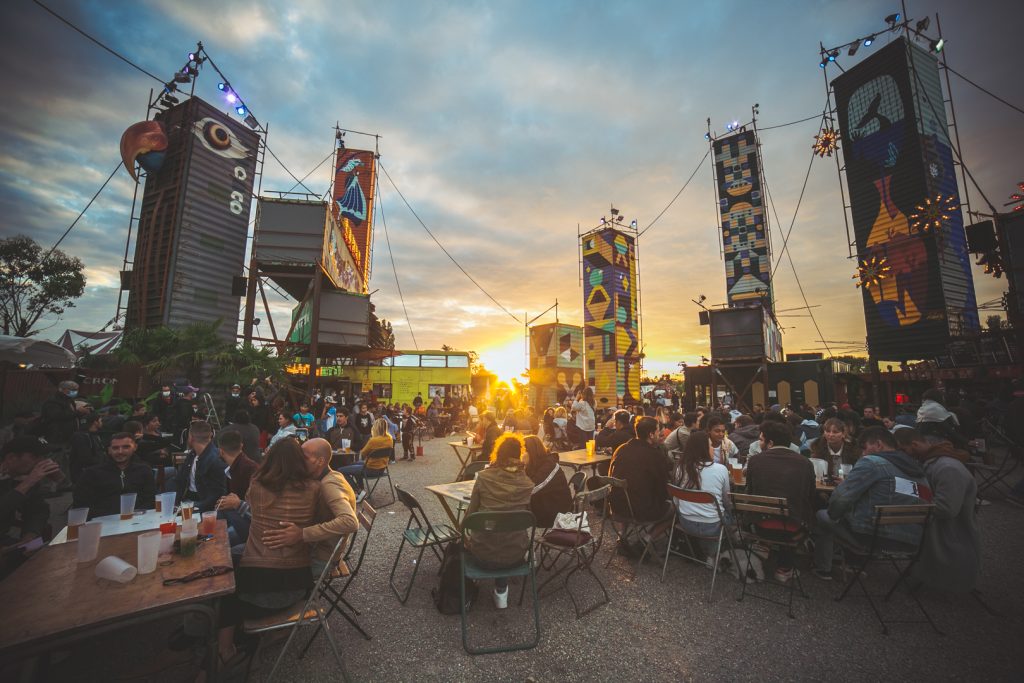Helsinki, Finland. A sustainable governance model for historical buildings.
![]()
![]()
As Nokia began to wind down industrial activity in Helsinki towards the end of the 80s, spaces in its factory were rented to artists, artisans and cultural organisations. The Cable Factory building was due to be demolished after Nokia vacated it, but the creative tenants lobbied the city, which owned the land, to
keep the factory going as a creative hub.
In 1991, the City of Helsinki founded KAAPELI, a limited real-estate company, to convert the Cable Factory into a cultural centre. Today, the centre consists of 63,000 m2 of space, used by 130 ateliers, two bars, 12 galleries, three museums, two restaurants, multiple event venues and a brand new dance house with two halls. In 2019, roughly 1,000 people worked at Cable Factory, and more than 500,000 people attended events there.
